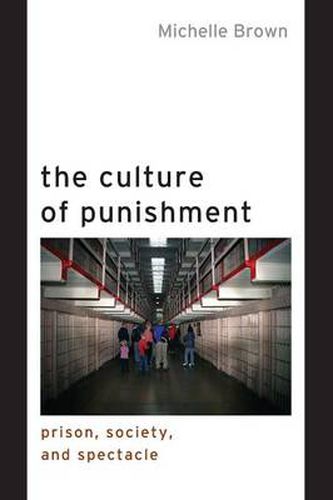Readings Newsletter
Become a Readings Member to make your shopping experience even easier.
Sign in or sign up for free!
You’re not far away from qualifying for FREE standard shipping within Australia
You’ve qualified for FREE standard shipping within Australia
The cart is loading…






America is the most punitive nation in the world, incarcerating more than 2.3 million people - or one in 136 of its residents. Against the backdrop of this unprecedented mass imprisonment, punishment permeates everyday life, carrying with it complex cultural meanings. In The Culture of Punishment , Michelle Brown goes beyond prison gates and into the routine and popular engagements of everyday life, showing that those of us most distanced from the practice of punishment tend to be particularly harsh in our judgments. The Culture of Punishment takes readers on a tour of the sites where culture and punishment - meet television shows, movies, prison tourism, and post 9/11 new war prisons - demonstrating that because incarceration affects people along distinct race and class lines, it is only a privileged group of citizens who are removed from the experience of incarceration. These penal spectators, who often sanction the infliction of pain from a distance, risk overlooking the reasons for democratic oversight of the project of punishment and, more broadly, justifications for the prohibition of pain.
$9.00 standard shipping within Australia
FREE standard shipping within Australia for orders over $100.00
Express & International shipping calculated at checkout
America is the most punitive nation in the world, incarcerating more than 2.3 million people - or one in 136 of its residents. Against the backdrop of this unprecedented mass imprisonment, punishment permeates everyday life, carrying with it complex cultural meanings. In The Culture of Punishment , Michelle Brown goes beyond prison gates and into the routine and popular engagements of everyday life, showing that those of us most distanced from the practice of punishment tend to be particularly harsh in our judgments. The Culture of Punishment takes readers on a tour of the sites where culture and punishment - meet television shows, movies, prison tourism, and post 9/11 new war prisons - demonstrating that because incarceration affects people along distinct race and class lines, it is only a privileged group of citizens who are removed from the experience of incarceration. These penal spectators, who often sanction the infliction of pain from a distance, risk overlooking the reasons for democratic oversight of the project of punishment and, more broadly, justifications for the prohibition of pain.